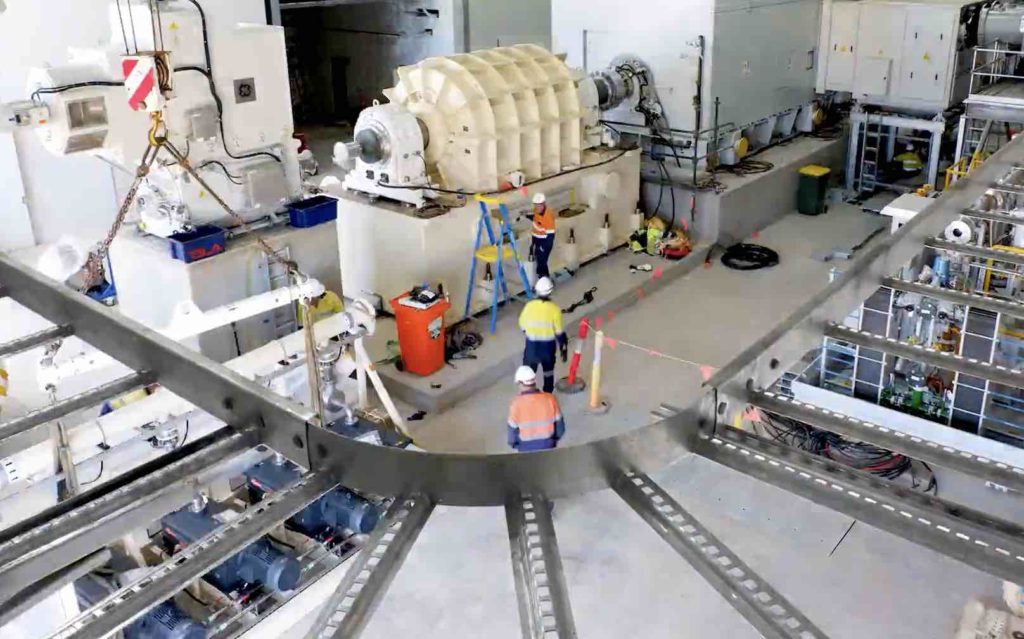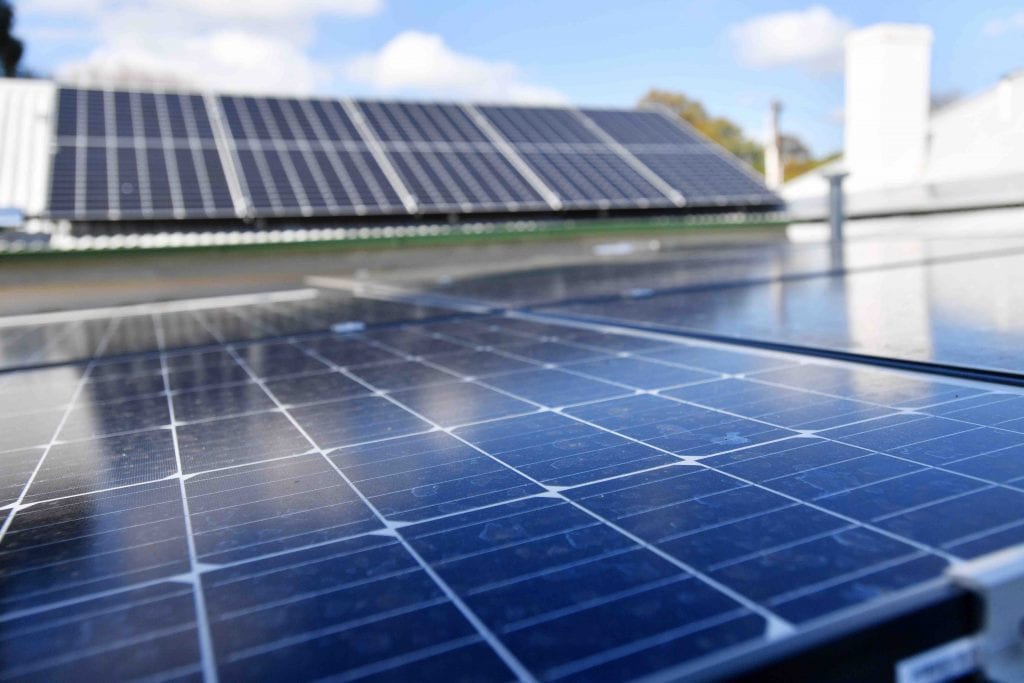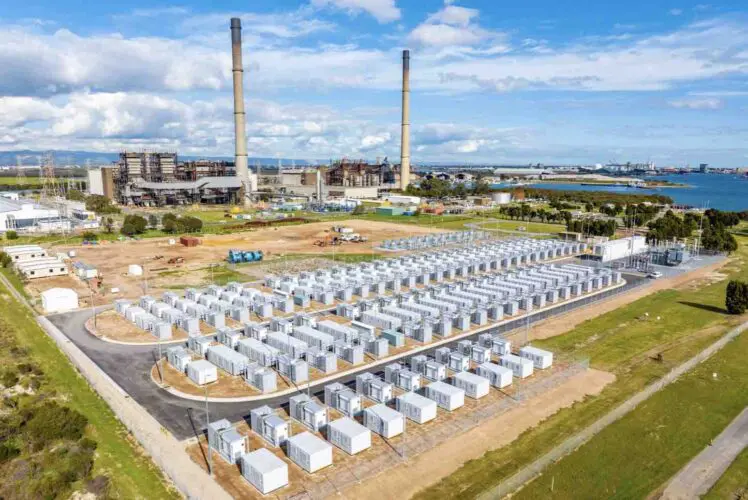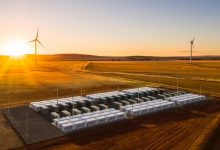This weekend marks the 8 year anniversary of the South Australian system black event. It was a turning point in the history of the NEM. It highlighted how quickly things are changing and the urgency to adapt. The last eight years have certainly been interesting ones, with more to come.
South Australia is not only an Australian pioneer in the transition, it’s a world leader. The International Energy Agency has marked South Australia as a front runner region when it comes to the transition, with record levels of VRE regularly meeting all SA demand.
It’s where the physical solutions, like big batteries and synchronous condensers, were first implemented. It’s where consumer energy resources (CER) really came to the fore. And its where AEMO has first tested the new operational models it will need to run a high renewables system.
This is a story of cascading technologies – of batteries big and small, syncons and gas turbines, of record rooftop PV. It’s also AEMO’s story, as the operator has navigated a world first transition. And it’s a story that ends where it began – with new uses for batteries, big and small, to finally get us off the gas (and coal).
It began with a late night tweet
Our power system was built on the back of big, synchronous generators – including coal, gas and hydropower – so called because they are electromechanically linked, or synchronised, to the system. They all spin at the same rate, almost magically linked by electromagnetism, and in so doing hold the power system together.
More technically, these synchronous coal generators have delivered critical system stability services like inertia, system strength and voltage control.
But of course, these big beasts are also big emitters of carbon. They are getting on in years and will need to be put out to pasture before they blow any more gaskets. We need to find replacements.
Batteries are one of the key technologies that will help break our dependency on coal generators for system stability. South Australia shows us how this might be done.
The famous 2017 exchange between Mike Canon Brookes and Elon Musk heralded the development of Australia’s first utility scale battery – the Hornsdale Power Reserve (HPR). HPR became the biggest utility battery in the world in November 2017, with a nameplate capacity of 100MW/129MWh, later upgraded to 150MW/194MWh.
ARENA has shown how big batteries like HPR operate as shock absorbers for the power system.
HPR participates in two schemes that protect South Australia from further blackouts, by managing the consequences of another trip of the Heywood interconnector. It also provides virtual inertia, helping control the overall stability of the SA power system.
The Big Battery story has played out elsewhere. Neoen’s 300MW/450MWh Victorian Big Battery allows increased flows on the NSW to Victorian interconnector, while in NSW, Akaysha’s 850 MW / 1680 MWh Waratah Super Battery will unlock renewables across the west of the state.
Big Batteries increasingly have grid forming capability which allows them to provide system strength, such as Edify Energy’s Darlington Point BESS. Transgrid has also begun the process of meeting its system strength obligations, including around 5GW of big batteries.
While batteries are amazing sources of system stability, some work remains. We need to find ways of getting off coal and gas generators entirely. However, AEMO also needs some synchronous machines in the system. A key challenge is how we get to that world where system stability isn’t inherently linked to synchronous coal or gas generation. SA again shows us what this looks like.
Getting off the gas
From around 2017, AEMO began manually maintaining a minimum number of gas generators online in South Australia. It did this by issuing directions, a manual override requiring generators to turn on (or off), even if the market tells them otherwise. Directed generators are paid compensation, with costs recovered from customers. I’ve written about this previously, for those interested.
At this time AEMO also began limiting the number of non-synchronous generators – predominantly wind generation – that could be online at any time. That was of course a big problem for those generators as it markedly reduced their revenues.

It wasn’t until SA network business ElectraNet installed four synchronous condensers that this situation began to change. These assets, known as ‘syncons’, are basically big lumps of spinning metal electromechanically coupled to the system, which provide the same system stability services as gas or coal generators… minus the carbon.
By December 2021, once these syncons came online, AEMO began to relax the number of gas generators it directed, dropping from four to two units. The syncons also allowed for relaxation of limits on SA wind generation.
However, AEMO continued to maintain a minimum number of two synchronous units in SA at any given time.
As in SA, so to everywhere else
The continued SA directions for two synchronous generators highlight a key challenge for AEMO. New technologies like syncons and batteries are valuable and powerful, however AEMO doesn’t have much experience in their use to maintain system stability.
This is why in South Australia it’s held on to a basic number of synchronous units, almost as a buffer until more experience is gained (and other specific issues, like voltage control in the Adelaide area, are addressed).
This shows us what we can expect across the rest of the NEM. The remaining coal generators will retire or move into different patterns of operation over the coming decades. At the same time, networks are only now beginning to build syncons and contracting with batteries. So its likely AEMO will be keeping minimum number of synchronous generators online in other states as well.
We already see the first signs. In 2023, for the first time AEMO issued directions to maintain a minimum level of synchronous generation online outside of SA, in NSW. This may not be the last time intervention is required to maintain this minimum number of synchronous generators in regions other than SA, at least until replacement assets are developed.
Unfortunately for AEMO, it may not always be so easy to simply direct on (or contract) this minimum level of synchronous coal generation.
This is because of the other juggernaut of the transition – the inexorable rise of distributed PV.
The DPV Revolution
Distributed PV is rapidly becoming one of the dominant forms of generation in the NEM and is set to continue to grow. The CEC’s “Rooftop solar and storage report: January – June 2024”, shows an additional 1.3GW of rooftop solar capacity was installed in the first half of 2024, with 2024 totals likely to be similar to the highs achieved every year since 2020.

Rooftop PV has been a boon for energy consumers and, along with distributed energy storage, is going to play a key role in decarbonising the energy sector. However, it also has the effect of reducing apparent demand on the system in the middle of the day – the well-known duck curve.
This cratering of operational demand significantly reduces the need for grid sourced electricity. This is no problem if the bulk of your generating fleet is wind, solar, hydro or energy storage – these technologies can simply turn off when the electricity they supply is not needed.
Synchronous coal generators, however, are very different beasts. Due to the way their steam boilers operate, coal generators can’t drop their electricity production below a minimum. These minimum safe operating levels represent a hard floor of electricity the generators simply must produce. Drop below this level and you shut down the entire unit, with significant restart costs.
The problem is that while there is demand for the stability services provided by the coal units, there is no demand for the electricity they produce, at least during the midday bottom of the duck curve. And that bottom is getting deeper every year, as the rollout of DPV increases.
This creates quite a conundrum for AEMO and for policy makers in general. How does AEMO maintain its minimum floor of synchronous units to maintain stability, even when the energy they produce isn’t needed?
There are few options to consider.
One way of managing the impact of DPV has been through emergency backstop mechanisms. These are blunt instruments that allow DPV to be remotely switched off when necessary. They are deeply unpopular with both solar households and governments. While these mechanisms are needed for managing rare, emergency events, more work is needed to ensure they function effectively if called upon.
Ideally though, DPV shouldn’t be seen as a problem to manage but instead an area ripe with opportunity. There are many ways this could be achieved.
Installing more residential batteries is the logical first step. Batteries can soak up excess solar power and manage minimum demand effects. However, we aren’t seeing necessary rates of battery installation, with only 20% of new solar installs having batteries attached. There are also millions of existing solar systems that would benefit from retrofitting a residential battery.
An enduring, federal residential battery incentive scheme would drive higher battery installs for new DPV, helping to reduce the level of passive solar exports driving minimum system load periods.
Orchestration is the other part of the puzzle. Orchestration means coordinating CER so they deliver maximum market benefit. These benefits are significant – the CECs “Home Battery Saver Program” Report finds that orchestration increases gross market value of batteries in NSW from $2000 to $6000. The AEMC also finds that orchestration reduces customer costs by $12 – 13bn.
The AEMC’s Integrating Price Responsive Resources Rule Change will unlock market access for aggregated CER, but also recognises that additional incentives are needed to drive orchestration. Several such programs have been developed in NSW and Victoria, however they have been limited in scope and time. An enduring federal battery incentive scheme would be welcome here.
Desperately seeking storage
Another option is to find some extra load on the system, to soak up excess power and increase apparent demand.
Which bring us back to batteries, both big and small.
AEMO has recently advised industry of issues around Minimum System Load, which it is rushing to manage. AEMO is developing a new procedure that basically boils down to issuing directions to batteries to charge at certain times, to increase operational demand on the system.

While energy storage systems offer a logical solution here, there is a key problem with AEMO’s approach. To provide this response, batteries need to be at a low state of charge and ready to soak up energy when needed. However there are currently no price signals to incentivise this to occur.
Another issue is that on the other side of the ledger, there are several coal units running at their minimum levels. We are at a place where those aggregate minimum levels of coal generation are butting up against the minimum levels of demand. And batteries are being asked to fix the problem.
The irony is a little bitter. Directing batteries to charge, so that coal generators can stay online, is a perverse outcome. It’s obviously inconsistent with a pathway to decarbonisation. But it’s also likely to negatively impact on the ongoing business case for battery investment.
In the short term, the CEC is working to find ways to avoid AEMO’s interventions from negatively impacting the business case for new batteries. We began by securing confirmation from AEMO that batteries would be directed, instead of being constrained on, so they could at least claim compensation. Now we need to determine exactly what type of compensation will be payable.
In the medium term, the new Type 2 contracts enabled through the AEMC’s recent ISF rule change could offer a way for AEMO to enter into contracts with providers of new services to deliver a stable transition. We can look to the West Australian NCESS contracts here as an example of what these contracts might look like.
Variants on FCAS might also be considered, as a type of super-extended lower service operating over a 4-6 hour time period. Finally, we could also consider changing the way the market price is set – that is, setting the market price to -$1000/MWh during periods when batteries are told to charge. This could create a strong signal for batteries to behave in the way the system needs.
Farewell my carbonaceous friends
Eventually though, we always come back to the reality that the synchronous coal generating units are going to exit the power system. We need to start planning for how system stability is maintained once those coal assets are gone.
The key challenge is how to break the nexus between provision of energy and essential system services. Coal generators provide both but aren’t easily able to separate them out.
We can look to the South Australian example again here. Assets like synchronous condensers provide stability services, but no power, thus breaking the link above and avoiding the minimum demand issue.
The four synchronous condensers in SA allowed AEMO to begin relaxing its dependence on gas generators. We are already seeing more syncons coming online across the NEM, with NSW leading the way on Project Energy Connect and its general system strength needs.
As we have seen, batteries can also play a key role, although more is needed to accelerate learning and confidence in their capabilities.
The final piece of the puzzle is the potential role of synchronous energy storage. These are energy storage assets that are synchronously connected to the power system. The Hydrostor Silver city project in Broken Hill is a prime example.
This compressed air storage solution will utilise what is basically a gas generator turbine, which enables it to provide synchronous services like inertia and system strength. Other solutions, particularly thermal energy storage, also provide opportunities to both soak up excess solar energy and then to provide synchronous services back to the grid when needed.
In the long term, well defined and co-optimised system service markets are critical. Working in tandem with the NSP procured System Strength and Inertia services, these new markets for essential system services – such as inertia or grid forming services – will be critical to break our dependence on synchronous coal units.
The pathway to a decarbonised power system is a long and bumpy one. But paying attention to the lessons learnt in South Australia will help us get there.
Christiaan Zuur is director of markets, grid and investment at the Clean Energy Council.






